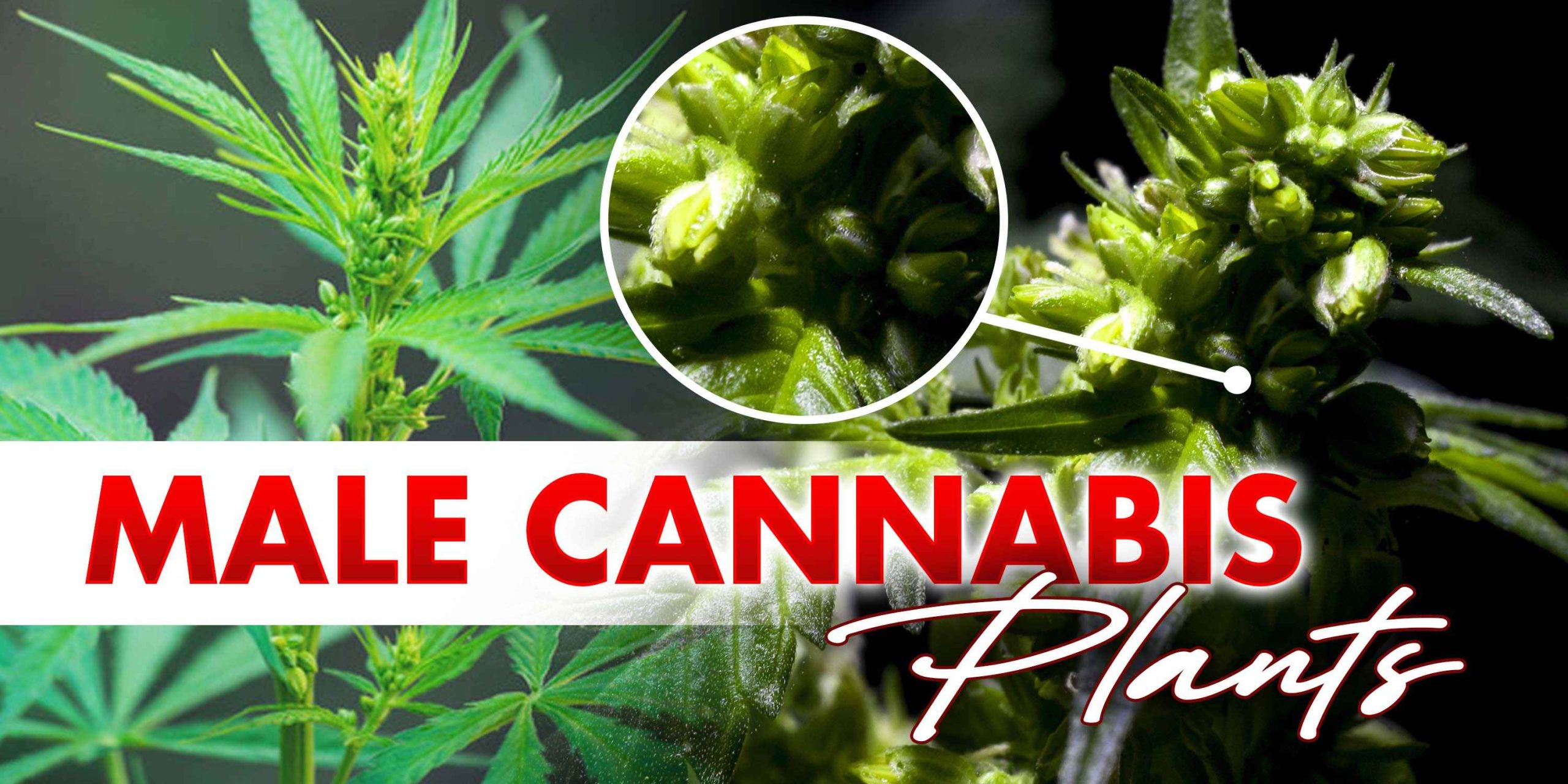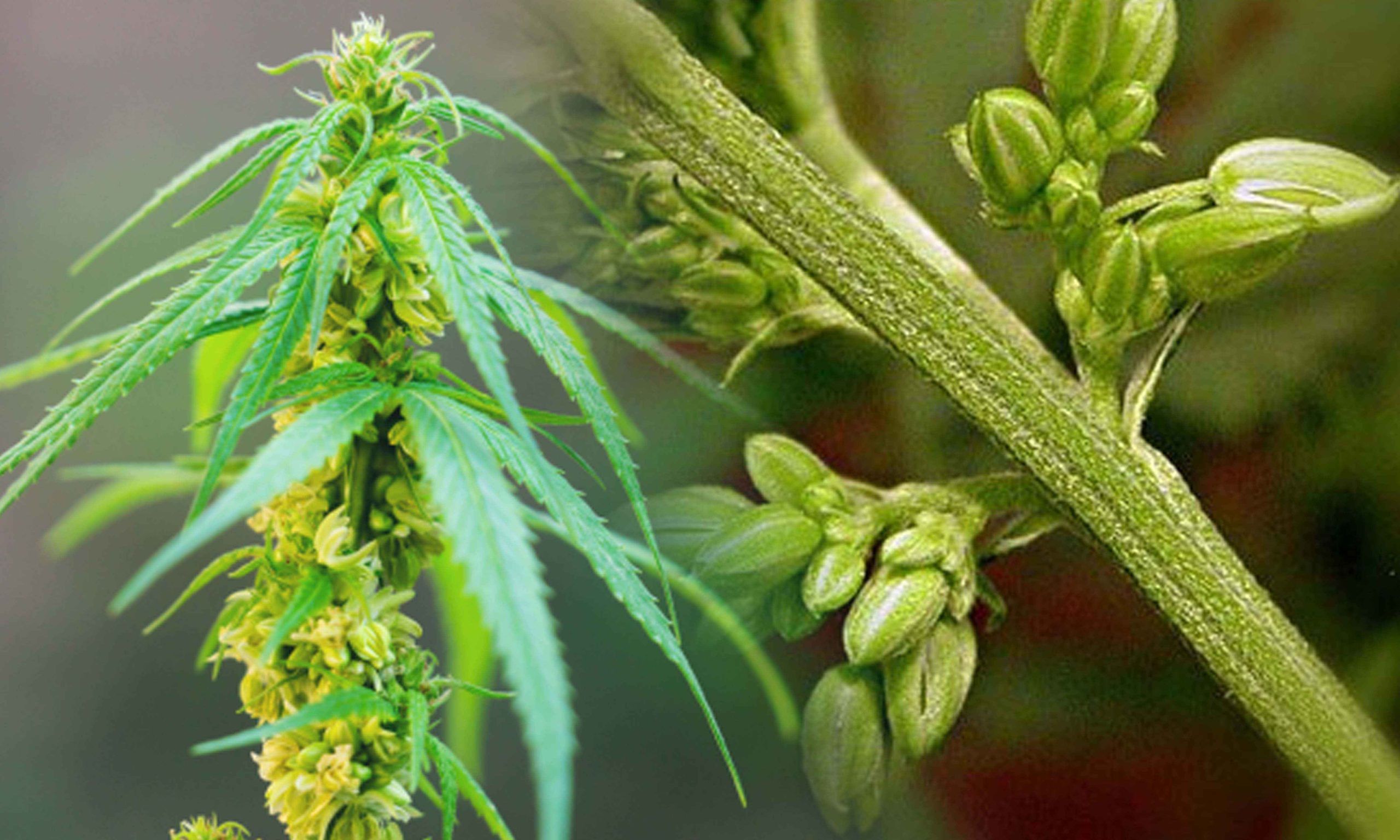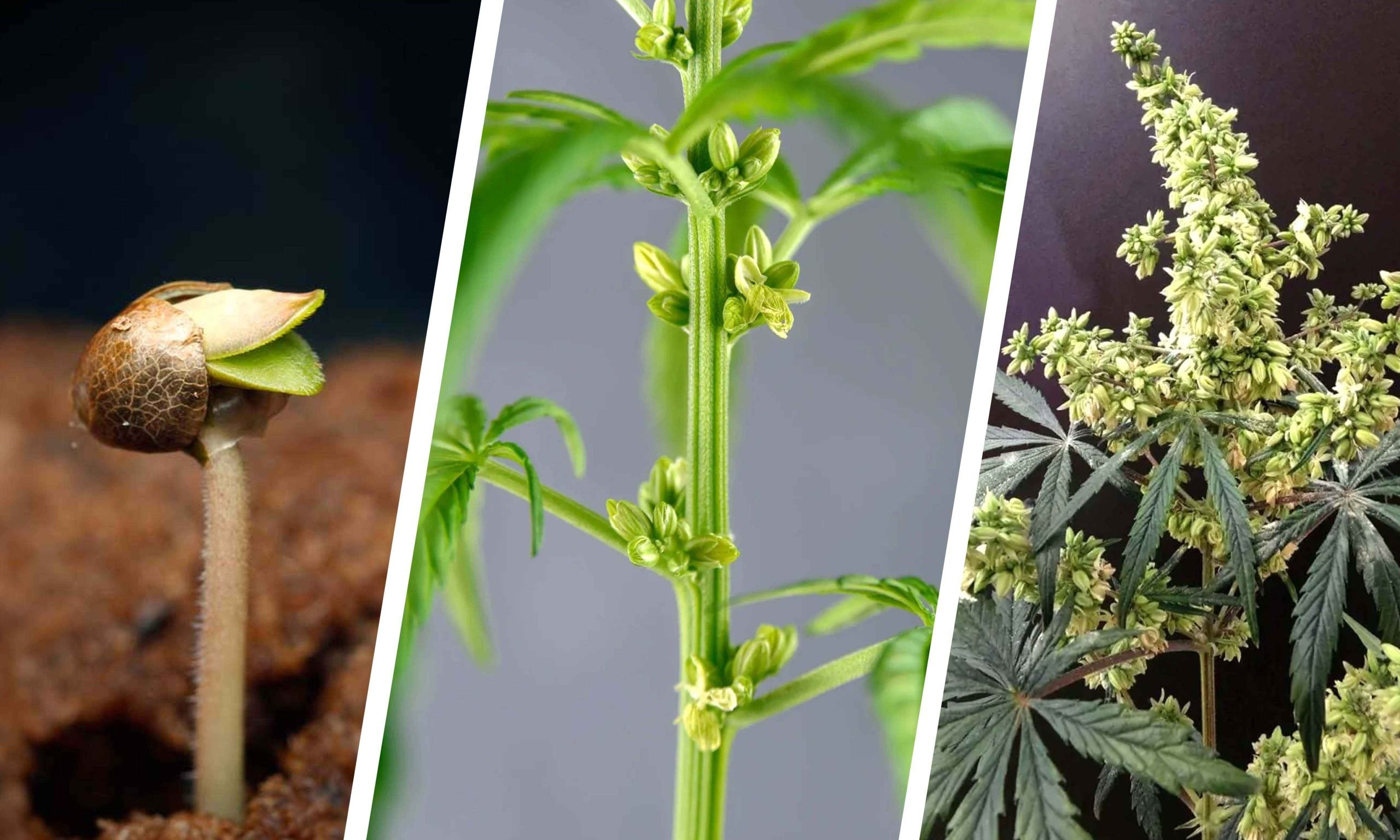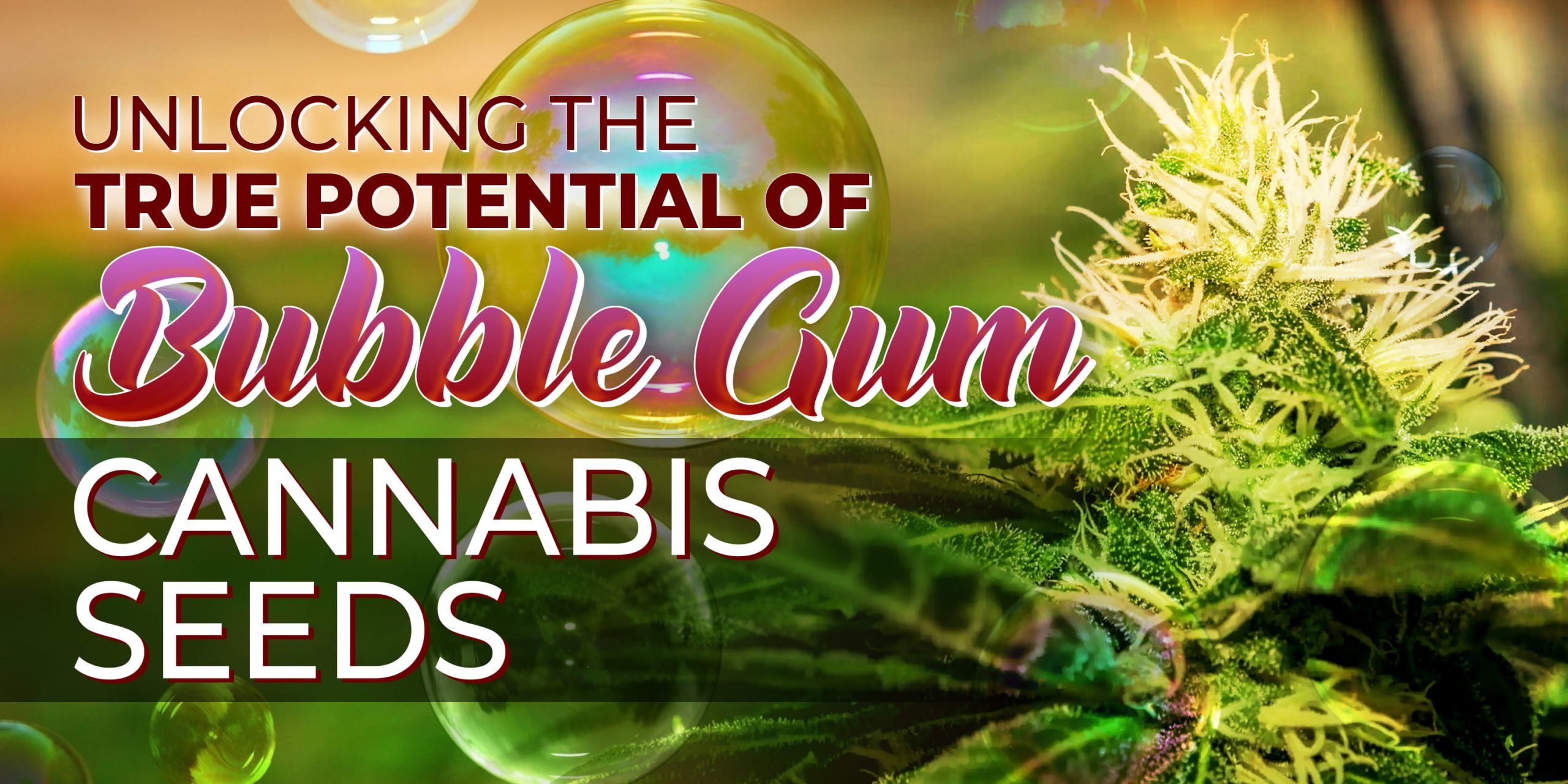In this detailed guide, we explore the complexities of male cannabis plants, providing insights into their structure, life cycle, and importance in cannabis farming. Despite often being overlooked compared to female plants, males are crucial for growing and breeding cannabis. Understanding their distinct traits and roles empowers growers to improve their cultivation techniques and boost the quantity and quality of their harvests.
Anatomy of Male Cannabis Plants
Male cannabis plants exhibit unique anatomical features that distinguish them from females. Central to their structure is the stamen, comprising the anther and filament. The anther houses pollen sacs, where pollen grains develop, while the filament supports the anther, facilitating pollen release. Understanding the development and function of these reproductive organs is essential for identifying and managing male plants effectively.
Furthermore, male plants typically display distinct growth patterns compared to females. During the vegetative stage, they often exhibit rapid vertical growth, resulting in taller stature and fewer lateral branches. This characteristic growth habit makes them easier to distinguish in a cultivation setting, aiding growers in the early identification and segregation of male plants to prevent unwanted pollination.
Stamen Development
The process of stamen development in male cannabis plants is a fascinating aspect of their lifecycle. As the plant transitions from vegetative to flowering stage, specialized cells within the anther undergo meiosis, giving rise to pollen grains. These grains contain the male gametes necessary for fertilizing female plants, thereby initiating seed production. Observing the progression of stamen development provides valuable insights into the plant’s reproductive readiness and optimal timing for pollen collection.
Growth Patterns
The growth patterns exhibited by male cannabis plants offer valuable clues for cultivators. Unlike their female counterparts, males tend to allocate more energy towards vertical growth rather than lateral branching. This characteristic growth habit results in a taller, sparser canopy with fewer leaves, making them easier to identify amidst a sea of foliage. By recognizing these growth patterns early on, growers can implement targeted cultivation strategies to optimize plant health and maximize yields.
Pre-Flowering Signs
Identifying pre-flowering signs in male weed plant buds is crucial for preventing accidental pollination. As the plant matures, it undergoes hormonal changes that signal the onset of flowering. One of the earliest indicators of impending flowering is the formation of primordial pollen sacs at the nodes. These sacs appear as small clusters of elongated structures, distinguishable from the round, bulbous calyxes of female buds. By monitoring these subtle cues, growers can take proactive measures to segregate male plants and prevent cross-pollination, ensuring the integrity of their crop’s genetics.
Lifecycle of Male Cannabis Plants
Understanding the lifecycle of male cannabis plants is paramount for successful cultivation. From germination to senescence, each stage presents unique challenges and opportunities for growers to optimize plant health and maximize yields. By gaining insight into the key phases of the plant’s lifecycle, cultivators can implement targeted strategies to support optimal growth and reproductive success.
Germination
The journey of a male cannabis plant begins with the germination of its seed. Under optimal conditions of moisture, temperature, and light, the seed awakens from dormancy, sending out a delicate taproot in search of nutrients and water. Germination marks the inception of the plant’s lifecycle, setting the stage for subsequent growth and development.
Vegetative Stage
Male weed plant stages during the vegetative stage, male cannabis plants focus on foliar growth and root development. Under the influence of vegetative growth hormones, such as auxins and cytokinins, the plant exhibits vigorous expansion of stems and leaves, establishing a robust framework for future flowering. Adequate nutrition, proper lighting, and optimal environmental conditions are essential during this stage to promote healthy vegetative growth and lay the foundation for successful reproductive transition.
Flowering Stage
As male cannabis plants transition into the flowering stage, they undergo dramatic physiological changes in preparation for reproduction. The onset of flowering is triggered by changes in light cycles, specifically the transition from longer days to shorter nights. In response to these environmental cues, the male weed plant flowering shifts its energy allocation towards reproductive processes, culminating in the development of pollen sacs within the stamen. The flowering stage represents a critical period in the plant’s lifecycle, requiring careful monitoring and management to ensure optimal pollination and seed production.
Role in Cannabis Cultivation
While female cannabis plants often take center stage in cultivation, males play a pivotal role in the reproductive cycle and genetic diversity of the species. By understanding their significance and leveraging their unique attributes, growers can enhance breeding programs, preserve genetic variability, and unlock new possibilities in cannabis cultivation.
Pollen Production
Male cannabis plants are primary producers of pollen, the microscopic grains containing male gametes essential for fertilizing female flowers. Pollen production occurs within specialized structures called anthers, located within the stamen of male plants. Under favorable environmental conditions, pollen grains are released into the air, where they can travel significant distances to reach receptive female flowers. By harnessing the power of pollen, growers can facilitate controlled pollination and breed cannabis varieties with desired traits and characteristics.
Breeding Programs
In controlled breeding programs, male cannabis plants play a pivotal role in shaping the genetic landscape of future generations. By selecting males with desirable traits such as cannabinoid content, terpene profile, and growth characteristics, breeders can introduce valuable genetic diversity into their breeding populations. Through meticulous crossbreeding and selection, breeders can develop new cultivars with enhanced potency, flavor profiles, and resilience to environmental stressors. Male cannabis plants serve as invaluable contributors to the ongoing evolution and improvement of cannabis genetics, driving innovation and advancement within the industry.
Genetic Preservation
Preserving genetic diversity is essential for the long-term sustainability and resilience of cannabis cultivation. Male cannabis plants contribute to genetic preservation by introducing novel genetic combinations and maintaining variability within breeding populations. By conserving diverse male genotypes, growers can safeguard against genetic homogenization and mitigate the risk of genetic bottlenecking. Furthermore, male plants serve as a genetic reservoir, harboring valuable traits and adaptations that may prove beneficial in future breeding efforts. Through conscientious stewardship and proactive conservation efforts, growers can ensure the continued vitality and adaptability of cannabis genetics for generations to come.
Conclusion
Male cannabis plants are integral components of the cannabis ecosystem, playing diverse roles in cultivation, breeding, and genetic preservation. By gaining a deeper understanding of their anatomy, lifecycle, and significance, growers can harness the full potential of male plants to optimize their cultivation practices and unlock new avenues of innovation. As we continue to explore and appreciate the complexity of the cannabis plant, let us recognize the vital contributions of male plants and their enduring legacy in shaping the future of cannabis cultivation.




















